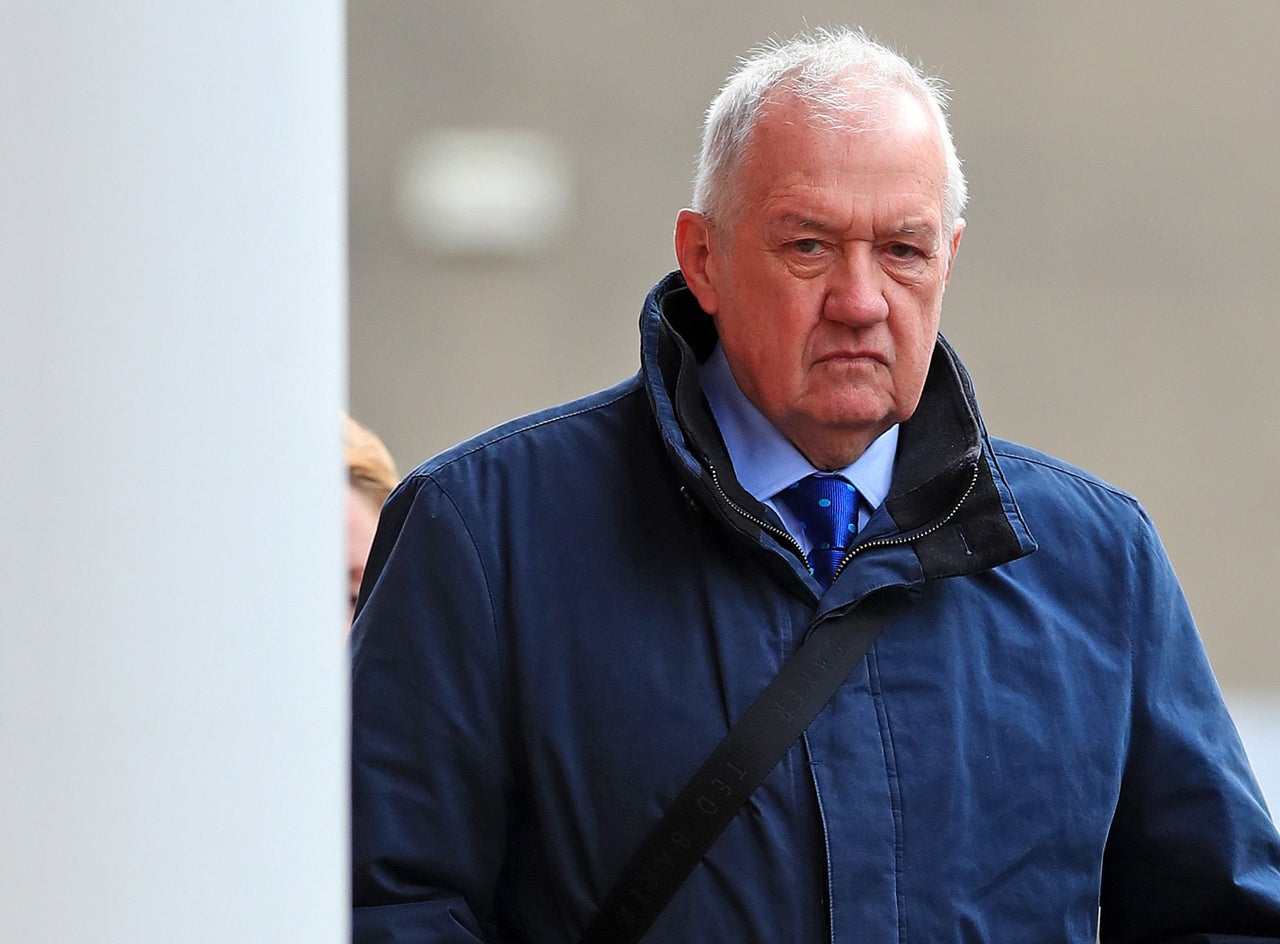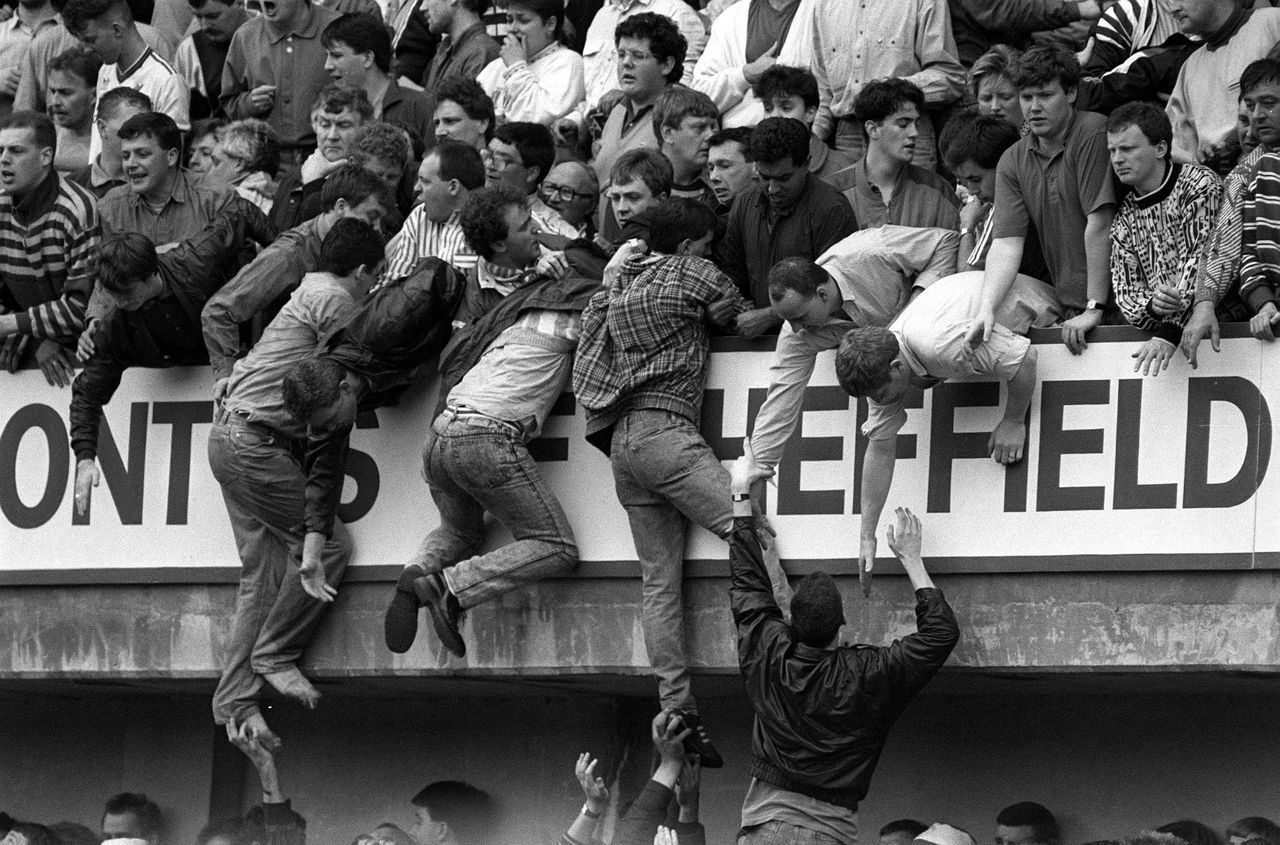The Hillsborough tragedy took place at the FA Cup semi-final between Liverpool and Nottingham Forest on Saturday April 15, 1989.
The disaster was a fatal human crush at the match held at the Hillsborough Stadium in Sheffield. With 96 deaths and 766 injuries, it remains the worst such case in British sporting history.
With the match sold out, more than 53,000 fans from the two sides headed to Hillsborough for the 3pm kickoff.
At the time, it was common practice at football grounds for the terrace to be divided into “pens” by high fences which put fans into blocks and separated them from the pitch.
The crush happened in the two standing-only central pens in the Leppings Lane stand allocated to Liverpool supporters.
Shortly before kickoff, to try to ease overcrowding outside the entrance turnstiles, Hillsborough police match commander David Duckenfield gave the order for exit gate C to be opened – leading to a greater influx of supporters into the already overcrowded central pens.
The Leppings Lane entrance had a limited number of turnstiles of which seven were allocated to the 10,100 fans with tickets for the standing terraces.
Once they had gone through the turnstiles, supporters would have seen a wide tunnel leading to the terrace and signposted “standing”.
As more people entered the stands, they were forcibly squeezed up against those in front who were already pressed up against the perimeters of the stands.
People then began to be crushed to death.
Fans desperately tried to escape the crush by climbing over the side fences into less packed adjoining fences, or tried to climb out of the pens and onto the pitch.
The game kicked off and fans continued to be pressed up against the fences and crush barriers in the two central pens. Supporters continued to climb perimeter fences to escape while others were dragged to safety by fans in the upper tiers.
Some fans managed to break free, but others had already become victims of asphyxiation after struggling for air.
At about 3.05pm, the referee was told to stop the game. In the aftermath, supporters tore up advertising hoardings to use as makeshift stretchers and tried to administer first aid to the injured.
The Hillsborough disaster claimed the lives of 96 Liverpool fans.
The 96 people killed by the crush ranged in age from the youngest, Jon-Paul Gilhooley, who was 10, to the oldest, Gerard Baron, who was 67. Seven of those killed were women or girls. The other 89 were men and boys and in total, 37 of the people who died were teenagers.
Who is David Duckenfield?

David Duckenfield, 75, is a retired South Yorkshire chief superintendent.
He was the match commander of the FA Cup semi-final at Hillsborough on April 15, 1989 when 96 Liverpool supporters were fatally injured in a crush on the ground’s Leppings Lane terrace.
What was he charged with?
Duckenfield was charged with the gross negligence manslaughter of 95 of the victims of the disaster.
Under the law at the time, he could not be charged with the manslaughter of the 96th victim, Tony Bland, because he died more than a year and a day after the disaster.
Who was the 96th Hillsborough victim?
Tony Bland, then 18, was the 96th Hillsborough victim. He was left severely brain damaged after the tragedy, and died almost four years later.
Bland, from Keighley, West Yorkshire, was left in a persistent vegetative state after the crush on the Leppings Lane terrace.
He died at the age of 22 after his life-supporting treatment was removed, following a legal battle.
He was not included in the manslaughter charges filed against David Duckenfield as too much time had passed, according to the law at the time.
What were the allegations against Duckenfield at the trial?
The prosecution alleged Duckenfield breached the duty of care he had as match commander by:
Failing to identify potential confining points and hazards to the safe entry of 24,000 Liverpool supporters who would enter through the Leppings Lane end of the ground
Failing to monitor and assess the number and situation of spectators yet to enter the Leppings Lane end of the ground
Failing to take action, in good time, to relieve crowd pressure at the Leppings Lane turnstiles
Failing to monitor and assess the number and situation of spectators in pens three and four of the Leppings Lane terrace
Failing, in good time, to prevent crushing to people in pens three and four by stopping the flow of spectators from the central tunnel.
The prosecution said the breach of his duty of care was grossly negligent and a substantial cause of the deaths.
The court was told Duckenfield ordered the opening of an exit gate to relieve crowds at the Leppings Lane end before the semi-final, allowing more than 2,000 spectators to enter the ground, with many heading down the tunnel to the central pens of the terrace.
The jury of seven men and three women took three days to clear him of the charges.
What were the five questions the jury were asked to consider?
The jury in the trial of Hillsborough match commander David Duckenfield was told it must answer “yes” to five questions if it was to find him guilty of gross negligence manslaughter.
Judge Sir Peter Openshaw set out the questions the jury must consider when deliberating whether the retired chief superintendent was responsible for the unlawful killing of 95 Liverpool supporters in a crush at the FA Cup semi-final on April 15, 1989.
The questions were:
Are you sure David Duckenfield owed a duty of care to spectators attending the match?
The court heard Benjamin Myers QC, defending Duckenfield, accepted the 75-year-old had owed a duty of care in law to the spectators attending the match to take reasonable care for their safety.
Are you sure the defendant was in breach of his duty of care?
Sir Peter said the prosecution alleged Duckenfield had breached his duty of care by failing to:
a) identify potential confining points and hazards to the safe entry of spectators;
b) monitor and assess the number and situation of spectators yet to enter the stadium from Leppings Lane;
c) take action, in good time, to relieve crowding pressures on fans seeking entry to the stadium from Leppings Lane;
d) monitor and assess the number and situation of supporters in pens three and four of the Leppings Lane terrace;
e) prevent crushing to fans in pens three and four by the flow of spectators through the central tunnel.
Jurors were told in order to find the defendant guilty they would all need to be satisfied he was in breach of his duty in at least one of the ways alleged and to agree on which of the breaches were proved.
Are you sure it was reasonably foreseeable that the defendant’s breach or breaches of duty would cause a serious and obvious risk of death to spectators by crushing?
Sir Peter told jurors they must be sure what Duckenfield did or did not do caused a reasonably foreseeable, serious and obvious risk of death to the spectators.
He said: “What was ‘reasonably foreseeable’ is a matter of fact and degree for you, the jury, to decide in the light of all the relevant circumstances as you find them to be.”
Are you sure that his breach or breaches of that duty of care caused, or at least substantially contributed to, the deaths of 95 persons named in the indictment?
The jury was told the prosecution did not have to prove Duckenfield’s breach was the only cause of the deaths, or the main cause, but that it was at least one of the substantial contributory causes.
Are you sure that his breach or breaches of his duty amounted to gross negligence?
Sir Peter said: “For negligence to be found to be ‘gross’, it must be, having regard to the foreseeable risk of death, so truly and exceptionally bad, so blameworthy, so reprehensible and so deserving of punishment, that it deserves to be marked by conviction of the serious crime of manslaughter.”
